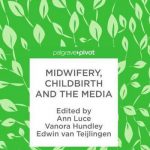A social marketing perspective on current narratives of childbirth choices and their influence on women’s views and maternity service use.
This cross-faculty HEIF-funded project aims to explore the current narratives of home birth choices found in social media and provide understanding of how knowledge exchange could influence them.
National Institute for Health and Care Excellence guidelines in the U.K recommend that pregnant women are offered choices regarding birth settings. This might be home, free-standing midwifery unit, alongside midwifery unit or an obstetric unit. However, there is evidence that many women are only familiar with the obstetric unit as a birthing option. In the recent national survey only 47% of women had enough information to help them decide where to have their baby and 20% of women were not offered any choices. Although home birth has been described as positive and fulfilling, women are offered limited choices for a home birth.
Our study focuses on societal knowledge regarding place of birth. It is suggested that the negative portrayal and absence of other birth settings options apart from obstetric units in the media and in society has framed childbirth as medical and has offered women limited choices Current research shows that pregnant women are increasingly relying on the media especially social media for pregnancy information needs and to find connections. Therefore, it is important to explore current social media content surrounding home birth narratives to understand what information is presented and to begin to explore the influence of these narratives on women’s decision making. The findings can subsequently be used to inform social marketing strategies to promote positive narratives surrounding homebirth.
This mixed method study will explore home birth narratives in social media and its influence on women’s decision-making using social media data scraping and qualitative interviews. The team will use PPI (patient and public involvement) to shape the development of the research tools and ensure stakeholders are actively involved throughout the project.
The research team:
Dr Julia Hibbert (BUBS), Assoc. Professor Chris Chapleo (BUBS), Aniebiet Ekong (HSS), Professor Vanora Hundley (HSS), Professor Edwin van Teijlingen (HSS), Assoc. Professor Ann Luce (FMC) and Anna Marsh (HSS) partnering with service users and women’s groups.
Some useful references:
Coxon, K., Chisholm, A., Malouf, R., Rowe, R. and Hollowell, J., 2017. What influences birth place preferences, choices and decision-making amongst healthy women with straightforward pregnancies in the UK? A qualitative evidence synthesis using a ‘best fit’framework approach. BMC pregnancy and childbirth, 17 (1), 1-15.
Coxon, K., Sandall, J. and Fulop, N. J., 2014. To what extent are women free to choose where to give birth? How discourses of risk, blame and responsibility influence birth place decisions. Health, risk & society, 16 (1), 51-67.
Fletcher, B. R., Rowe, R., Hollowell, J., Scanlon, M., Hinton, L. and Rivero-Arias, O., 2019. Exploring women’s preferences for birth settings in England: A discrete choice experiment. Plos one, 14 (4), e0215098.
Naylor Smith, J., Taylor, B., Shaw, K., Hewison, A. and Kenyon, S., 2018. ‘I didn’t think you were allowed that, they didn’t mention that.’A qualitative study exploring women’s perceptions of home birth. BMC pregnancy and childbirth, 18 (1), 1-11.
NICE, N. I. f. H. a. C. E., 2017. Intrapartum care United Kingdom
Sperlich, M. and Gabriel, C., 2022. “I got to catch my own baby”: a qualitative study of out of hospital birth. Reproductive Health, 19 (1), 1-13.
Vickery, M., van Teijlingen, E., Hundley, V., Smith, G. B., Way, S. and Westwood, G., 2020. Midwives’ views towards women using mHealth and eHealth to self-monitor their pregnancy: A systematic review of the literature. European journal of midwifery, 4.
 Cross-faculty team receive CyberASAP 22-23 funding from Innovate UK to develop HEIF funded project!
Cross-faculty team receive CyberASAP 22-23 funding from Innovate UK to develop HEIF funded project! New BU cross-faculty publication
New BU cross-faculty publication Top three most accessed 2016 paper BMC Pregnancy & Childbirth
Top three most accessed 2016 paper BMC Pregnancy & Childbirth










 BU academic publishes in online newspaper in Nepal
BU academic publishes in online newspaper in Nepal Final day of the ESRC Festival of Social Science
Final day of the ESRC Festival of Social Science Using Art to enhance Research
Using Art to enhance Research Register now to attend the 17th Annual Postgraduate Research Conference – Wednesday 3 December 2025
Register now to attend the 17th Annual Postgraduate Research Conference – Wednesday 3 December 2025 ECR Funding Open Call: Research Culture & Community Grant – Application Deadline Friday 12 December
ECR Funding Open Call: Research Culture & Community Grant – Application Deadline Friday 12 December MSCA Postdoctoral Fellowships 2025 Call
MSCA Postdoctoral Fellowships 2025 Call ERC Advanced Grant 2025 Webinar
ERC Advanced Grant 2025 Webinar Horizon Europe Work Programme 2025 Published
Horizon Europe Work Programme 2025 Published Horizon Europe 2025 Work Programme pre-Published
Horizon Europe 2025 Work Programme pre-Published Update on UKRO services
Update on UKRO services European research project exploring use of ‘virtual twins’ to better manage metabolic associated fatty liver disease
European research project exploring use of ‘virtual twins’ to better manage metabolic associated fatty liver disease